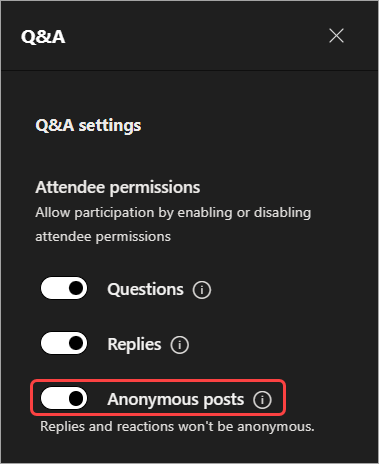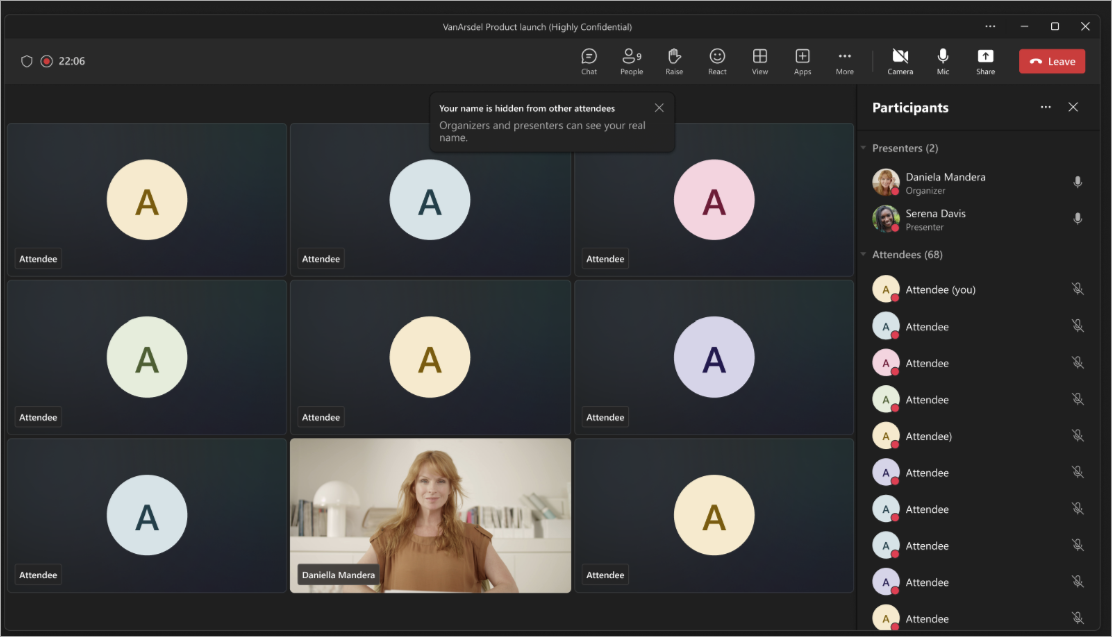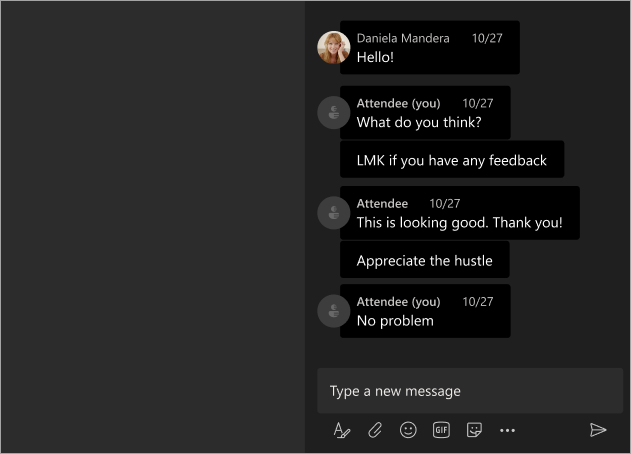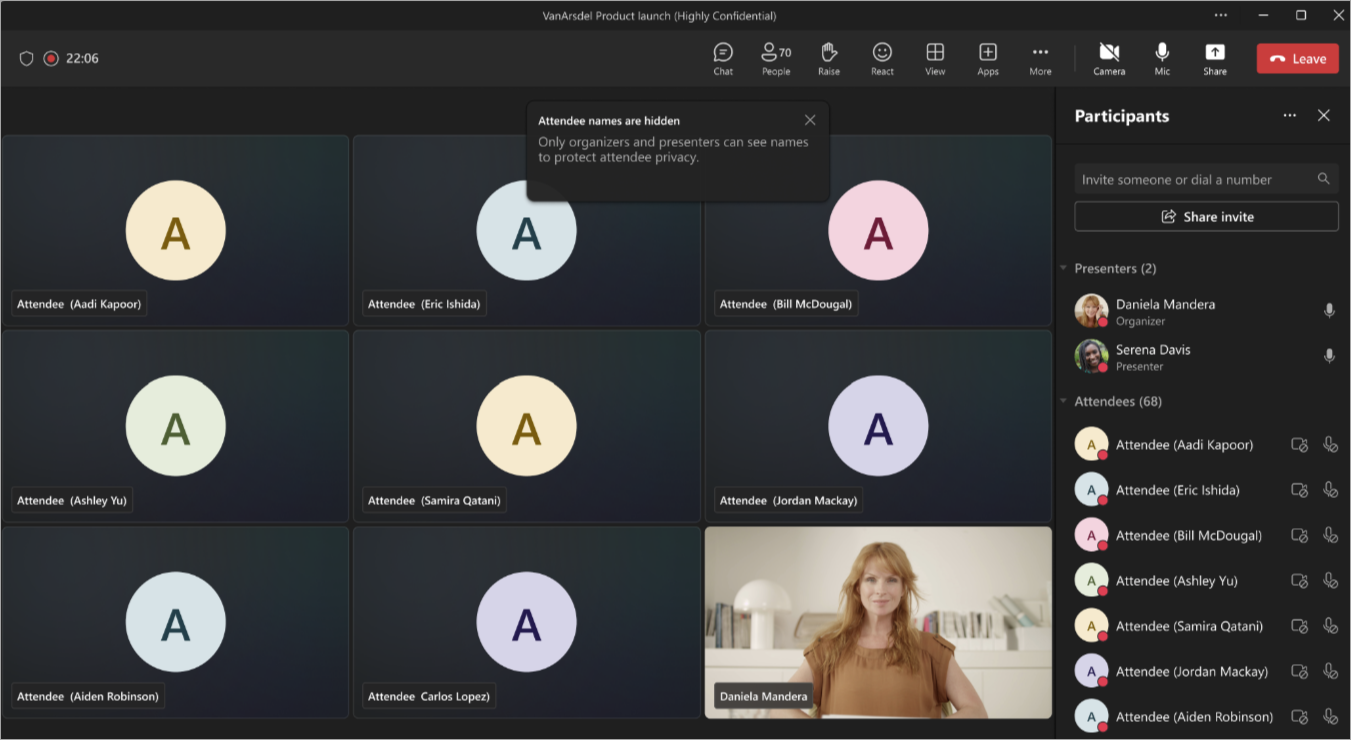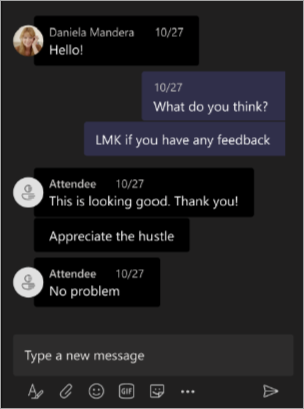Hide attendee names in Microsoft Teams meetings and webinars
Note: Hiding attendee names is available as part of Teams Premium, an add-on license that provides additional features to make Teams meetings more personalized, intelligent, and secure. To get access to Teams Premium, contact your IT admin.
Hide attendee names during Teams webinars and meetings to protect their privacy. Attendees can still participate in chat and raise their hands.
Organizers, co-organizers, and presenters can see attendee names if they're hidden.
Organizer and presenter names and details are visible to everyone. If you make someone a co-organizer or presenter during the meeting, their name will be revealed automatically.
Note: Hiding attendee names isn't currently supported in breakout rooms.
Hide attendee names
Choose to hide attendee names when initially scheduling a meeting or webinar. Once the meeting option is saved, it can't be changed later.
Hide names in a meeting
-
Select Calendar
-
Select an event and select Edit
-
In Event, select Meeting options
-
In Participation
Note: To hide attendee names, Who can present can't be set to Everyone.
-
Select Save.
-
Select Calendar
-
Select a meeting or event.
-
Select Edit.
-
In the meeting description, press and hold ctrl and select Meeting options.
-
In Participation
Note: To hide attendee names, Who can present can't be set to Everyone.
-
Select Save.
Notes:
-
Names of people invited won't be hidden in the meeting details.
-
Attendee names aren’t automatically hidden in apps during your meeting. Adjust each app’s settings manually after you join the meeting to keep attendee names hidden.
Hide names in a webinar
-
Create a new webinar or open an upcoming one in your Teams calendar.
-
In Details, select Meeting options
-
In Participation
-
Select Apply.
-
Select Save
Note: The names of people invited to the webinar will be hidden.
Hide names in Q&A
If you turn on Q&A in a meeting or webinar, attendee names will be visible unless you hide them manually.
To hide names in Q&A:
-
Join your meeting or webinar with Q&A turned on.
-
In the meeting controls, select Q&A > Q&A settings
-
Turn the Anonymous posts toggle on.
-
Select Save.
Important: This setting only anonymizes Q&A posts. Q&A replies and reactions won't be anonymous.
If you use other apps in Teams meetings, manually adjust each app's settings to keep attendee names hidden.
Attendee view
Attendees can't see names and details of other attendees. They'll be able to see names and details of organizers and presenters.
Note: Attendee live reactions are supported on Teams for desktop.
Meeting window
Chat window
Organizer and presenter view
Organizers, co-organizers, and presenters will see attendees' names next to their Attendee label. When they hover over an attendee, the attendee’s name, profile photo, and details will appear.
Organizers and presenters can follow up with attendees about their questions or responses in chat.
Meeting window
Chat window







